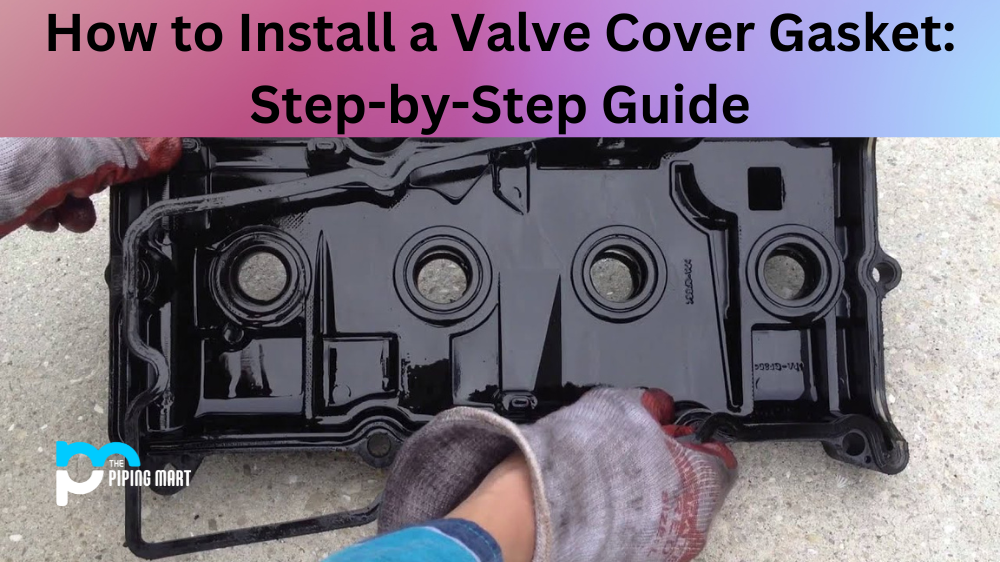The Ultimate Guide to Valve Cover Gaskets: Everything You Need to Know
When it comes to maintaining your vehicle’s engine, one component that often gets overlooked is the valve cover gasket. This small yet crucial part plays a significant role in keeping your engine running smoothly. In this comprehensive guide, we’ll delve into what a valve cover gasket is, its importance, signs of failure, replacement process, and much more. Whether you’re a car enthusiast or a casual driver, understanding the ins and outs of valve cover gaskets can save you time and money in the long run.
Key Takeaways
- The valve cover gasket is essential for sealing the valve cover to the engine cylinder head, preventing oil leaks.
- Signs of a failing valve cover gasket include oil leaks, burning oil smell, and engine misfires.
- Regular inspection and timely replacement can prevent engine damage and maintain performance.
- DIY replacement is possible, but professional assistance is recommended for those unfamiliar with engine components.
What is a Valve Cover Gasket?

A valve cover gasket is a seal that sits between the engine’s valve cover and the cylinder head. Its primary function is to prevent oil from leaking out of the engine, ensuring that the lubrication system operates efficiently. Typically made from materials like rubber or cork, valve cover gaskets are designed to endure the high temperatures and pressures within the engine.
Importance of the Valve Cover Gasket
The valve cover gasket is vital for maintaining the integrity of the engine’s lubrication system. By preventing oil leaks, it ensures that the engine components are properly lubricated, reducing friction and wear. A well-functioning gasket helps maintain engine performance and longevity, making it a crucial component in your vehicle’s overall health.
Signs of a Failing Valve Cover Gasket
Identifying a failing valve cover gasket early can save you from costly repairs down the line. Here are some common signs that your gasket might be failing:

- Oil Leaks: One of the most obvious signs is oil leaking from the engine. You may notice oil spots under your vehicle or oil residue around the valve cover.
- Burning Oil Smell: If oil leaks onto hot engine parts, it can produce a noticeable burning oil smell, often detectable inside the cabin.
- Engine Misfires: Oil leaking into the spark plug wells can cause the engine to misfire, leading to rough idling or reduced performance.
- Low Oil Levels: Frequent drops in oil levels without visible leaks elsewhere could indicate a gasket problem.
How to Replace a Valve Cover Gasket
Replacing a valve cover gasket is a task that many DIY enthusiasts can handle with the right tools and knowledge. However, if you’re not confident in your mechanical skills, it’s advisable to seek professional help. Here’s a step-by-step guide for those willing to tackle the job themselves:
- Gather Your Tools: You’ll need a socket set, screwdrivers, a torque wrench, and a new valve cover gasket.
- Prepare the Vehicle: Ensure the engine is cool to prevent burns. Disconnect the battery to avoid electrical shorts.
- Remove the Valve Cover: Carefully unbolt the valve cover and remove it, taking care not to damage any surrounding components.
- Clean the Surfaces: Use a clean cloth to remove any old gasket material and debris from the valve cover and cylinder head.
- Install the New Gasket: Position the new gasket onto the cylinder head, ensuring it fits snugly into place.
- Reattach the Valve Cover: Carefully align the valve cover over the gasket and bolt it back into place, using a torque wrench to tighten to the manufacturer’s specifications.
- Reconnect the Battery: Once everything is securely in place, reconnect the battery and start the engine to check for leaks.

Preventive Maintenance Tips
To extend the life of your valve cover gasket and avoid unexpected failures, consider these maintenance tips:
- Regular Inspections: Periodically check for any signs of oil leaks or gasket wear during routine maintenance.
- Use Quality Oil: High-quality engine oil can reduce the risk of gasket deterioration over time.
- Monitor Engine Temperature: Overheating can accelerate gasket wear, so ensure your cooling system is functioning properly.
The valve cover gasket may be a small component, but its role in maintaining your engine’s health is significant. By understanding its function, recognizing the signs of failure, and knowing how to replace it, you can ensure your vehicle runs smoothly and efficiently. Regular maintenance and timely replacement of a faulty valve cover gasket can prevent more severe engine issues, saving you time and money. Whether you’re a seasoned mechanic or a car owner eager to learn, keeping an eye on your valve cover gasket is a wise move for any vehicle maintenance routine.